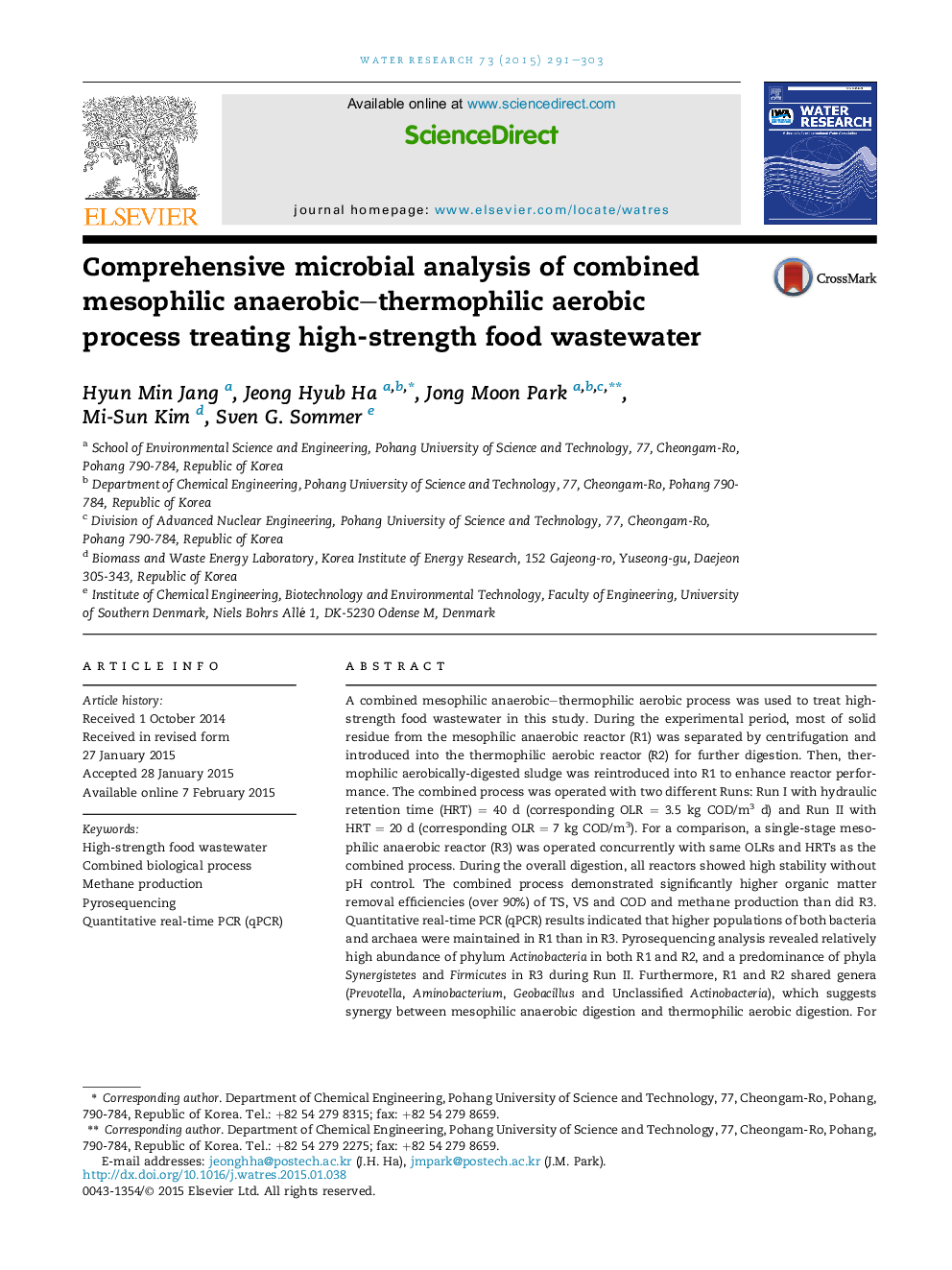| کد مقاله | کد نشریه | سال انتشار | مقاله انگلیسی | نسخه تمام متن |
|---|---|---|---|---|
| 4481247 | 1623095 | 2015 | 13 صفحه PDF | دانلود رایگان |

• A combined process was investigated for high-strength food wastewater treatment.
• A combined process indicated high organic matter removal and methane production.
• Pyrosequencing and qPCR methods were used to investigate the microbial community.
• Microbial communities were highly shifted by organic loading rate.
• Significant proportion of bacterial genera was shared in a combined process.
A combined mesophilic anaerobic–thermophilic aerobic process was used to treat high-strength food wastewater in this study. During the experimental period, most of solid residue from the mesophilic anaerobic reactor (R1) was separated by centrifugation and introduced into the thermophilic aerobic reactor (R2) for further digestion. Then, thermophilic aerobically-digested sludge was reintroduced into R1 to enhance reactor performance. The combined process was operated with two different Runs: Run I with hydraulic retention time (HRT) = 40 d (corresponding OLR = 3.5 kg COD/m3 d) and Run II with HRT = 20 d (corresponding OLR = 7 kg COD/m3). For a comparison, a single-stage mesophilic anaerobic reactor (R3) was operated concurrently with same OLRs and HRTs as the combined process. During the overall digestion, all reactors showed high stability without pH control. The combined process demonstrated significantly higher organic matter removal efficiencies (over 90%) of TS, VS and COD and methane production than did R3. Quantitative real-time PCR (qPCR) results indicated that higher populations of both bacteria and archaea were maintained in R1 than in R3. Pyrosequencing analysis revealed relatively high abundance of phylum Actinobacteria in both R1 and R2, and a predominance of phyla Synergistetes and Firmicutes in R3 during Run II. Furthermore, R1 and R2 shared genera (Prevotella, Aminobacterium, Geobacillus and Unclassified Actinobacteria), which suggests synergy between mesophilic anaerobic digestion and thermophilic aerobic digestion. For archaea, in R1 methanogenic archaea shifted from genus Methanosaeta to Methanosarcina, whereas genera Methanosaeta, Methanobacterium and Methanoculleus were predominant in R3. The results demonstrated dynamics of key microbial populations that were highly consistent with an enhanced reactor performance of the combined process.
Figure optionsDownload high-quality image (187 K)Download as PowerPoint slide
Journal: Water Research - Volume 73, 15 April 2015, Pages 291–303